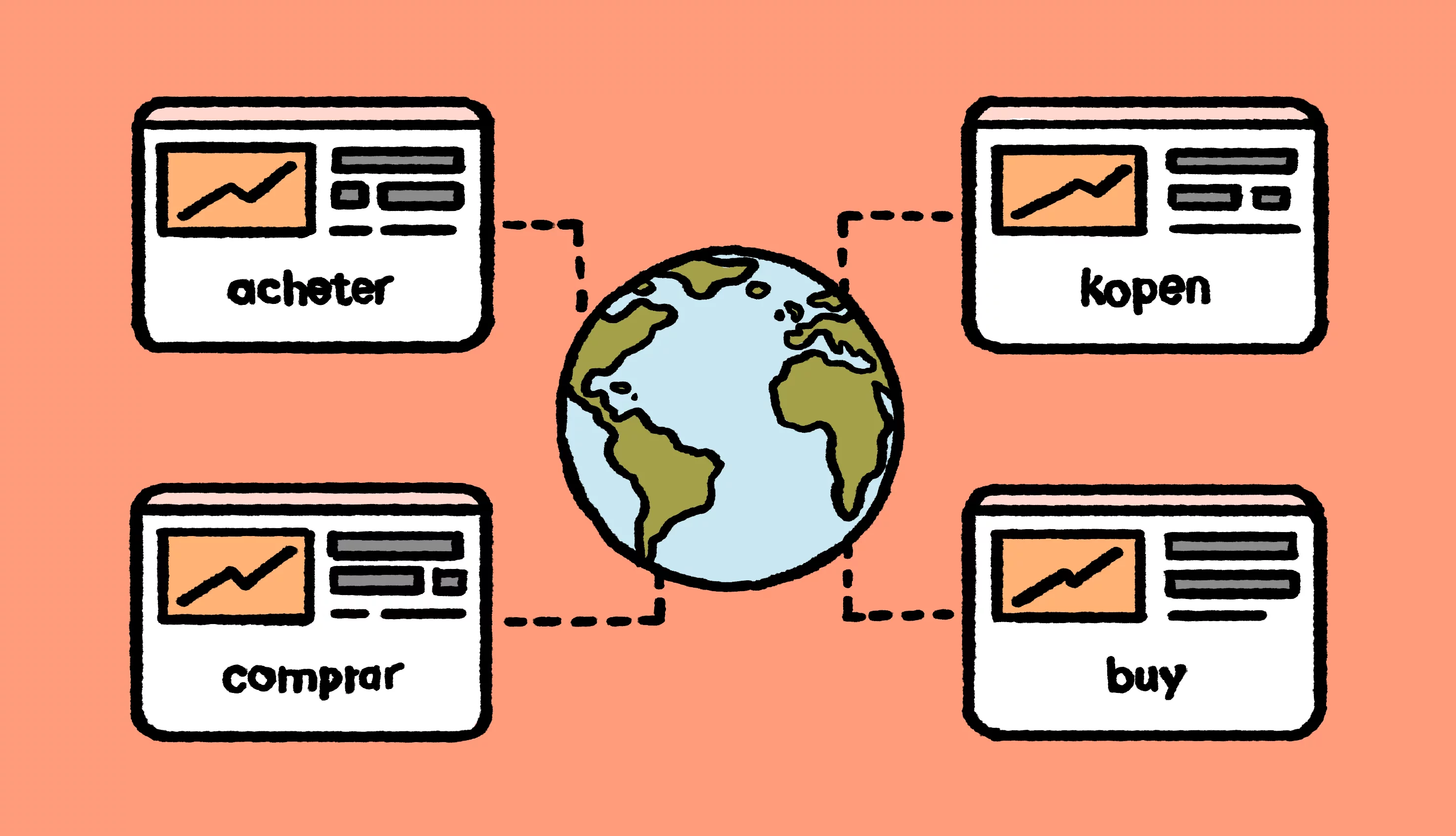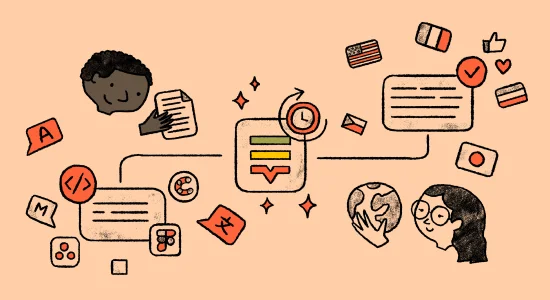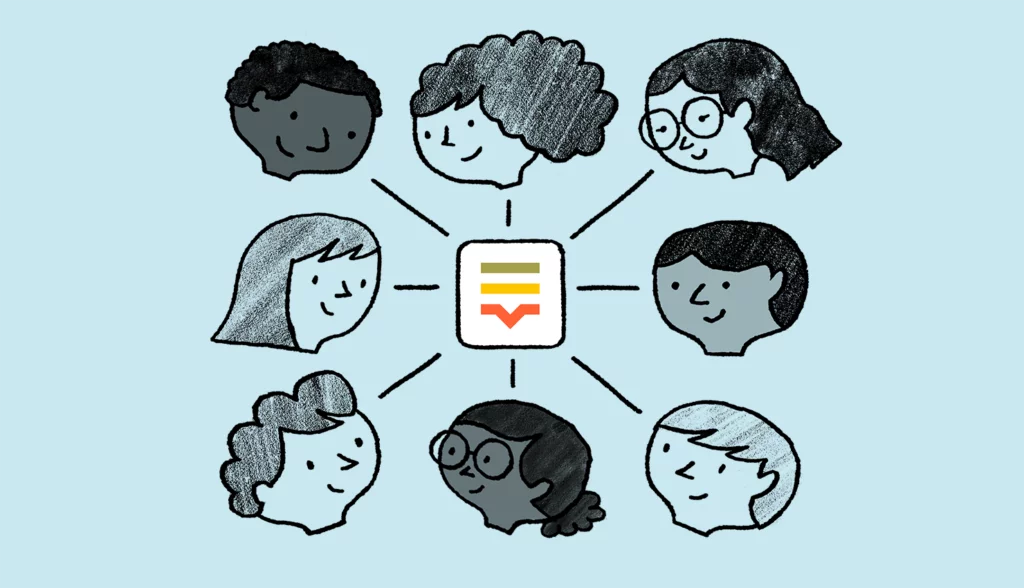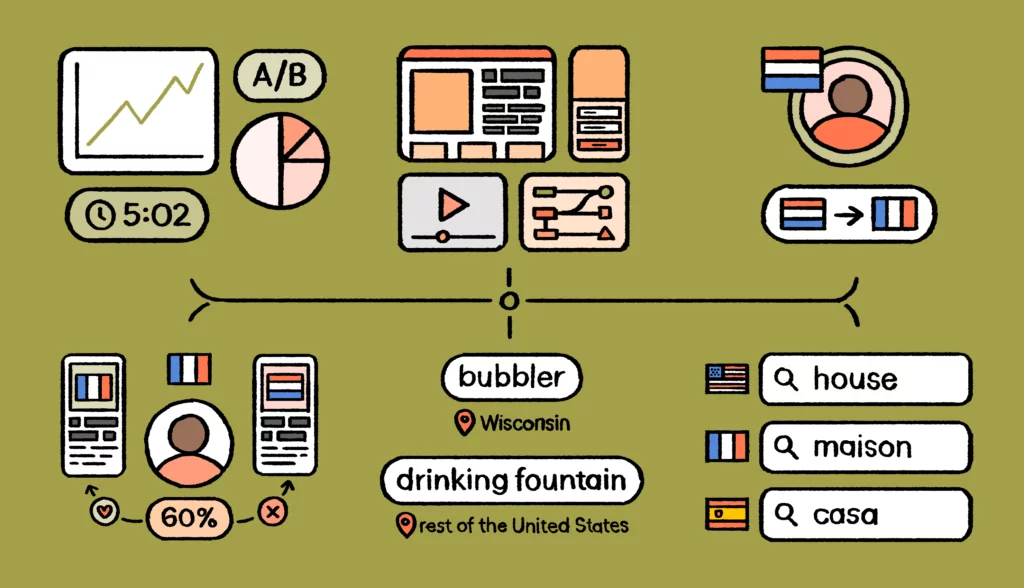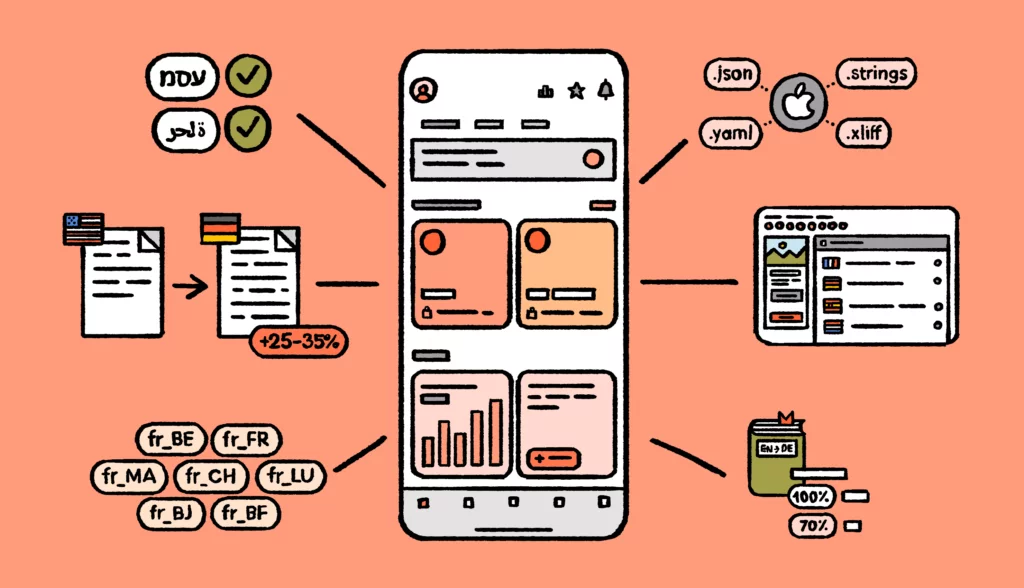To understand what localization is, begin with what it isn’t. It’s not “translation”. That’s just where it starts. True localization means communicating across different markets in accordance with their cultures – adapting content and media, stories and structures to local experiences and expectations, so they make perfect sense everywhere they’re seen.
You might be also interested in our “How to successfully translate a website” article.
How does localization work?
The localization process
Once, “localization” meant sending an enormous, multi-row, spreadsheet with endless columns to a translation agency and hoping for the best. The modern localization process is a compilation of steps and procedures outlining how localization is performed at your company. Localization involves a significant number of stakeholders and roles – both in your company and externally. This means even small misunderstandings can easily cause a descent into chaos. Having everything written down and agreed upon can prevent the usual uncertainty you may often find in other non-standardized tasks. This matters because true localization is a process of management – connecting assets, resources, and people with consistent workflows that deliver localized content efficiently and accurately, day after day, year after year.
Who are those people? They fall into five groups. Developers, creating applications and websites that need to be localized. Managers, guiding each project to completion. The creatives who write, design, and produce content, and the translators who transform their work into other languages. Plus, of course, the reviewers and QA experts who make sure everything remains fit for purpose.
The localization process connects them with a common element: the key or string identifier, markers that label sections of content (images, text, links) needing customization. So everything requiring localization is marked out – and mapped to a localization file that connects the source version with its equivalent in another language. This ensures that each paragraph of text is identified for localization – and also that your “Submit” button only needs to be translated once.
However, localization files aren’t simple. There are many formats (Apple .strings and XLIFF, XML for Android, and others for the web) and few are human-readable, creating risks of mistakes, missteps, and inconsistencies. A great translation management system (TMS) brings them together – on one easy-to-use platform that delivers consistent outcomes, every time. Not as a file format or technical standard – but as a smooth business process.
Fully localized content
Of course, localization starts with translation. But even this has layers. There’s a difference between a straight translation and a nuanced rendition that takes note of context and culture; the closer your content is to customers, the more this matters. An English source text laced with offbeat humor will fall flat in German – and your global brand will look a global mess.
Your voice, localized worldwide
And that includes tone and manner. There are 14 languages spoken by 100m or more people each – and even if you speak all of them, you’ve only accounted for three-quarters of the world’s population. Multiply that across the different approaches of individual translators, and the potential for chaos is clear. Using a TMS allows every expert to follow the same approach and instructions when translating, maintaining your one true voice across cultures.
Different people, different pictures
Images need localization, too. Consumers like pictures that reflect who they are: photographs soaked in African sunshine may not resonate with a Swede in the Arctic Circle. Keeping it visual means envisaging the differences between cultures as much as the variations between languages. Communication is more than words, after all.
Formats fitted and followed
Simpler, but no less vital, are formats for things like dates and time. Large parts of the world don’t use the 24hr clock; dates are written differently on opposite sides of the Atlantic; weights and measures and currency symbols change from nation to nation. True localization is about making every consumer feel that the content was created for them – and that means attention to every detail.
Adapting the user experience
And some of those details are large. Written Chinese flows from top to bottom and right to left; Japanese and Korean combine phonetic scripts with Chinese characters; Arabic letterforms change with what comes next; and tongues from French to Finnish carry glyphs and glosses on their vowels and consonants. All are beautiful – but can your user interface present them effectively? It’s why localization isn’t a surface layer; it needs to reach deep into your business processes.
Providing for payments
Finally, of course, comes the business end: localized payment methods. It’s more than showing local currencies on your price list. Credit cards abound in the West; other regions use bank transfers, cash-on-delivery, even text messages to exchange value. Sounds a long way from translation? It is. This is true localization.
The benefits of localization
Localization takes work. But it provides benefits beyond measure in expanded markets, broader audiences, and deeper engagement with customers worldwide. And the more you do it, the more you learn – giving you countless competitive advantages. These are just a few of them.
Reach new markets
The average top-ten SaaS provider offers its wares in 17 languages. Over half of all consumers say language matters more than price. And websites reach a global audience in the billions. That’s a lot of people to localize content for. But there’s a payoff: the Harvard Business Review (HBR) says companies who embrace localization earn 50% more than those who don’t. And the more you do, the deeper you go. You gain an intimate understanding of the differences between local markets and distant cultures, which lets you sell more to them.
For more on website localization, read our guide on How to conduct website localization in 7 steps
Increase customer satisfaction
There’s a gap between what people *can* do and *will* do. Europe’s a multilingual place, but according to HBR, 42% of consumers never shop outside their native tongue. And good luck selling to China without Mandarin – despite that nation having more English speakers than many English-native countries. But offer native options and you’ll see CSAT scores skyrocket. And it’s not limited to what’s on your website. Even real-time chat can be localized, translating common answers in real time.
Reduce business risk
In conversation, misunderstandings are a laugh. In international business, they’re no laughing matter. In a different political or legal environment, mistranslated information – or just an inconsistent approach – can lead to customer actions, lawsuits, and worse. But they can be mitigated. Treating localization as a business process, with agreed methods and workflows for approaching each market, keeps the risks in check.
Increase brand relevance
You don’t really own your brand; your customers do. It’s the sum total of what they think about you. And when you speak to them in their own language, with knowledge of their cultural norms, they respond in kind. By buying more. Recommending you to friends and family. Making you a larger part of their lives. Localization strengthens your brand… everywhere.
Drive growth worldwide
All of this, of course, contributes to your bottom line. More sales. Greater profits. And broader market appeal that leads to more opportunities for growth. When you start localizing, you’ll come to understand: it’s not a cost of doing business. It’s an investment that enables you to do more business.
Making localization easy with Lokalise
That’s localization in a nutshell: an enabler. And you can start today. The Lokalise TMS is available for a free 14-day trial, so you can explore its potential and apply it to your first projects. We’d also be happy to demo it to you. Why not contact us today? In your preferred language, of course.
